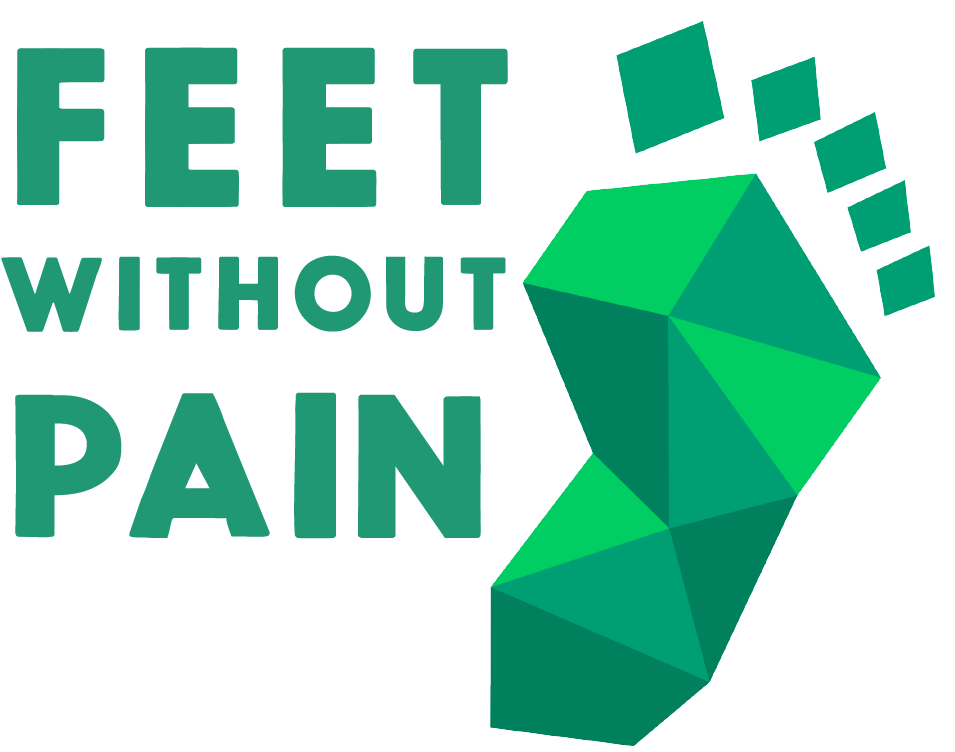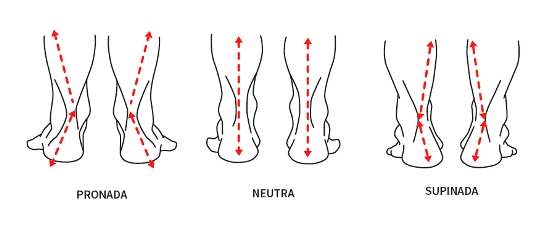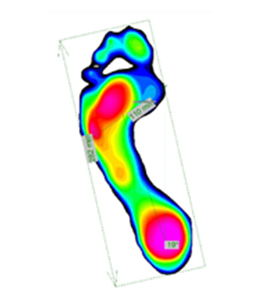Heel Pain
Every day we exert a massive load on our feet, and the main region receiving all this load from the body and distributing it to the rest of the feet is the heel. The main component, which names this area, is the calcaneal bone. It is solid and resistant, as when making the first contact of the foot with the ground, it receives a high impact.
We have many structures in the heel, such as tendons and ligaments. In addition, the region is directly linked to the Achilles tendon and the plantar fascia, which are often affected by chronic pathologies that are difficult to treat, such as plantar fasciitis and Achilles tendonitis. The ankle is another structure related to the heel region, which usually suffers a lot from acute injuries such as sprains and fractures.
CAUSES
Heel pain is one of the adults’ most common lower limb problems, leading to severe pain and even affecting day-to-day activities. This pathology has many causes, as several factors can influence and cause pain in this region, such as the natural alignment, trauma, excessive load, inadequate footwear, and footstep types.
Alignment
Feet alignment is closely related to many pathologies. The best alignment for the heel is neutral, in which the forces will be applied equally between the inside and outside sides, so neither side will overload, decreasing the chances of injury.
When there is a varus alignment, the ankle is displaced outwards. Usually, the footstep type would be supinated, where the most pressure is exerted on the foot’s outer lateral. These alignment and footstep types relate to pain on the lateral edge of the foot, the heel, and the fifth metatarsal.
In valgus alignment, the opposite happens. The ankle is displaced inwards and is often associated with pronated walking, causing higher pressure on the foot’s inner lateral. Valgus alignment may be related to muscle insufficiency, sesamoiditis, and pain in the plantar arch, the first metatarsal, and the big toe.
In addition to the pathologies above, heel misalignment can alter the force lines directed to the Achilles tendon, leading to Achilles tendonitis or bursitis.
Overloads
Excessive load is one of the main villains when talking about heel pain. This extreme load can happen due to the weight on the feet and the entire body. It can also appear when there is an increase in training loads or inadequate stepping. These factors cause unbalanced pressure on the sole, causing pain.
If a lot of pressure is put on the heel while walking or running, it means excess weight load in that area, and the body may not absorb it efficiently, injuring the structures.
A baropodometry exam is performed to evaluate the pressures exerted when walking. This exam indicates if there is an overload in the heels, as in the example below:
The pink color represents the highest pressure; in this case, the person applies a lot of pressure on the heel area when the foot touches the ground. This excess load has a great chance of being the cause of pain.
Trauma
The heel region is also prone to pain resulting from trauma. Overall, the most common traumas are sprains and fractures. Ankle sprains, both inward and outward, are widespread injuries.
Fractures are the most severe trauma and may require surgery to correct. Caused by falls, blows, and sprains, they can occur directly on the calcaneus or the bones close to it, such as the small bones of the ankles and feet. The most common ones causing heel pain are those of the calcaneus itself and the ankle. These cases will need specialized treatment and protection.
Inadequate shoes
Shoes are crucial factors for the feet’s health. They can be the villains responsible for causing foot, heel, and ankle pain. These problems are due to the following:
– Stiff sole that does not absorb impact;
– The heel tab and counter are rigid and squeeze the heel and Achilles tendon area, causing blisters, leading to Achilles tendonitis or bursitis.
The best thing for these cases is always wearing comfortable shoes and custom-made orthopedic insoles to reduce impact, protect the heel, and correct misalignments.
Calluses
The heel continuously receives a colossal load. Therefore, as the most exposed structure, it is the first to present a protective response to overload, generating calluses and dryness. A callus is a skin layer thickening in an overstressed place. Initially, it’s like protection for that region, but it can grow and dry over time, leading to pain and cracks.
For these cases, the ideal is to visit a podiatrist to remove excess skin and use an insole that redistributes pressure, so calluses do not reappear. They indicate impaired pressure distribution that may lead to more severe complications if left untreated.
MAIN PATHOLOGIES THAT CAUSE HEEL PAIN
Plantar fasciitis
According to the “Plantar heel pain and plantar fasciitis” study, the plantar fascia is a tissue located on the foot’s underside from the heel to the area near the toes. Plantar fasciitis is this tissue’s inflammation that occurs when excess weight, tension, and significant impacts burden it. Symptoms are very similar to spurs, such as heel and sole pain. Fasciitis can cause severe pain, making it difficult to carry out normal day-to-day activities like walking. Standing or sitting for a long time, being overweight, high-impact workouts, inadequate shoes, flat feet, and pes cavus are some of the factors that cause fasciitis. The primary forms of treatment and prevention are using orthopedic insoles to correct the footstep, redistribute plantar pressure, and stretch and strengthen foot and calf structures.
Heel spur
The calcaneal spur is a bone fragment that grows from the calcaneus, the heel bone. It develops due to a significant overload on the heel caused by high-impact activities and the use of inadequate shoes. The types of feet are also factors that can cause this pathology. Pes cavus and flat feet are not efficient enough to cushion the impact properly, as they are too stiff or collapsed. The best way to prevent and treat it is to use orthopedic insoles.
Calcaneal tendinitis
It is an inflammation or degeneration of the calcaneal tendon, also known as the Achilles tendon. It is closely related to the practice of high-impact sports, such as long-distance running, for example. The main symptoms are a pain in the Achilles tendon, which may radiate to the calf or heel, stiffness when moving the ankle, local edema, and tendon thickening.
The leading causes of Achilles tendonitis are related to very intense training, being overweight, or step misalignment. It can also affect the elderly, obese, and workers who spend much time on their feet. The treatment must be done correctly to avoid the degenerative process of the tendon, as in more severe cases, partial or total tissue tearing may occur.
Retrocalcaneal bursitis
Bursae are tiny fluid-filled “sacs”, which act as shock absorbers, relieving friction between bones, tendons, and muscles, protecting our body against possible damage. The inflammatory process of a bursa is called bursitis. When the “sacs” located in the heel are inflamed, retrocalcaneal bursitis occurs. Its most common symptoms are redness, swelling, calluses, pain in the back of the foot, and local sensitivity. The main causes are tight shoes, trauma, being overweight, stepping errors, and excessive use of high heels.
Haglund’s deformity
Also known as Haglund’s syndrome, it is an abnormal bone growth in the posterior region of the heel, which occurs due to excessive load, demand from the Achilles tendon, and excess friction in the area. It can cause inflammation of the tendon or the bursa, causing pain and functional limitations. Its symptoms are walking difficulties, stiffness, redness, and severe pain near the Achilles tendon insertion into the calcaneus.
This pathology is more frequent in women because they wear high and tight heels. This practice can lead to the worsening of the condition.
Types of foot
There are three different foot types: the neutral, the cavus, and the flat. Each format has a different plantar arch structure making the foot prone to specific injuries.
– Neutral foot: the neutral foot has an arch compatible with its length and width. It is the most usual and appropriate way to distribute the load on the feet and absorb impact;
– Pes cavus: the pes cavus has a higher and more accentuated arch, its support area is smaller, and the pressure exerted on the feet is explicitly concentrated on the metatarsals (the region close to the toes) and the heel. Spur growth in those with pes cavus can cause foot pain. The plantar fascia in this type of foot is shortened and tense, favoring calcaneal spurs;
– Flat foot: has the lowest arch and an extensive support area, as almost the entire sole is in contact with the ground. As a result, this type of foot has less capacity to absorb load when compared to the standard foot. In addition, the plantar fascia is overloaded in flat feet, favoring the appearance of the spur.
PREVENTION AND TREATMENT
As heel pain can have many causes, treatment will depend on factors such as:
– The injury diagnosis;
– How long has the person had these symptoms;
– When these pains appear and what the pain is like (sharp, throbbing, stabbing, burning);
– What activities trigger the pain;
– Whether any trauma was involved in the pain onset and the type of footwear used.
Based on this information, a specialized professional can indicate the best form of treatment. Some causes, such as misalignment and overload, can be easily treated with insoles.
Custom insoles and shoes can improve the pressure distribution on the heel and properly align the feet, ankles, and knees. With these resources, it is already possible to prevent most causes of pain. They also cushion and protect this region, assisting in most heel pathologies. To help relieve pain and make the treatment more efficient, it is necessary to:
– Decrease body weight in cases of overweight and obesity;
– Stretch mainly the plantar fascia and calf;
– Do physical activities with the help of a professional to strengthen the musculature of the region;
– Improve plantar pressure distribution;
– Wear custom-made shoes and insoles.
FEET WITHOUT PAIN® CUSTOM SHOES AND INSOLES FOR HEEL PAIN
The Feet Without Pain insoles work to correct the client’s footfall and redistribute plantar pressure. The insoles manufactured in 3D printers accommodate your feet because they are custom-made according to each foot’s specific anatomy. As a result, they offer greater comfort during low- and high-impact physical activities and have an elevation in the heel region that removes overload and redistributes plantar pressure.
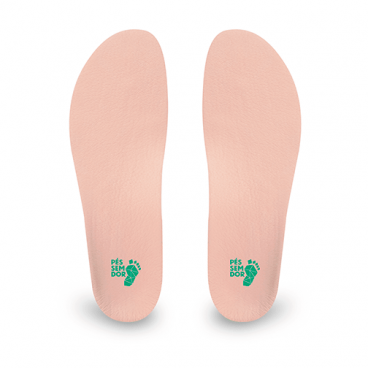
Bespoke shoes perfectly suit the heel region. This is because they consider each person’s feet anatomy, providing comfort. Moreover, the soles of the shoes are manufactured in 3D printers, guaranteeing the necessary support to the foot structures to eliminate heel pain.
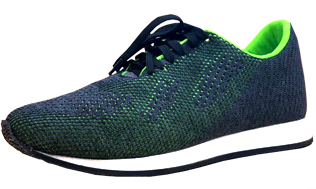
The custom-made insoles and shoes are made with 3D technology and millimetric digital precision after a free foot, ankle, and knee evaluation with our specialists at one of our branch offices. Check some of their benefits for your feet below:
- Elimination or reduction of pain;
- Injury prevention;
- Increased comfort;
- Perfect fit;
- Standing longer without pain or discomfort;
- Prevention of pathologies progression;
- Improved impact absorption;
- Improved sports performance.
SPORTS
If you play any sport or do physical activities that cause heel impacts, it is recommended to stop or reduce its frequency. It is best to opt for activities that will not cause as much impact on the heel as they could worsen your condition. Here are some recommended sports:
– Swimming: works with muscles and joints throughout the body, favoring improved blood pumping and heart health. Frequent strokes in the pool can improve the cardiorespiratory system capacity. This activity is recommended for people of all ages, especially during pregnancy or in old age;
– Water aerobics: strengthens the muscles due to muscle contractions. It does not harm the joints but lowers the heart rate and blood pressure, as the heart works better. Ideal for those who have arthritis, arthrosis, or are overweight.
TIPS AND CURIOSITIES
Exercises
To strengthen the foot musculature:
– Try to pick up a towel from the floor with your toes. Do 10 to 15 repetitions, 3 to 4 times a week;
– Position yourself at the end of a step, stand on your toes for 10 seconds, and slowly return to the limit. Perform three sets of 15 repetitions once a day.
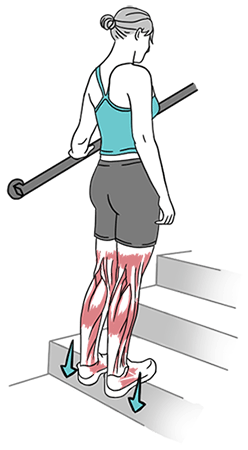
For relaxation and analgesia
Take a frozen water bottle and place it on the floor. Cover it with a towel and step on it, rotating on the sole, for about 15 minutes on each foot.
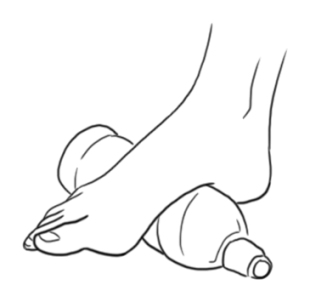
Exercise for relaxation and analgesia
ATTENTION:
HOME RECIPES TO RELIEVE HEEL PAIN
Epsom salts
Epsom salts have anti-inflammatory and calming action, improving blood circulation. In addition, its minerals help relax the foot’s musculature and relieve the pain caused by fasciitis.
Ingredients
– 5 cups of water;
– 4 spoons of Epsom salts.
Method of preparation
Put the water to heat, but leave it for a short time. The water must be at an ideal temperature to put your feet in. Pour water into a basin and add salts. Then dip your feet into the water and hold for 20 minutes.
Coconut and Lavender Oils
These two oils combined stimulate blood circulation, generate a feeling of warmth, and then release tension and pain in the affected area due to their therapeutic and anti-inflammatory properties.
Ingredients
– 2 spoons of organic coconut oil;
– 1 tablespoon of lavender essential oil.
Method of preparation and use
Heat the coconut oil in a bain-marie, then mix it with the lavender oil. Then test the oil temperature to verify that it is adequate. Before it gets cold, massage your feet for 5 minutes. Apply moderate pressure with your fingertips to the affected areas, rubbing the oil to penetrate the skin. Let the mixture be absorbed into the skin. It is not necessary to rinse. Do this procedure every night.
Attention: Remember that homemade tips are widespread knowledge and need scientific confirmation of effectiveness. Relief of referred pain may be a placebo effect generated by the synesthetic stimuli of home measures. The best way to relieve pain is always to seek help from an expert.
FREQUENTLY ASKED QUESTIONS (FAQs)

How to purchase your custom shoe or insole?
It’s fast and easy! Schedule a free evaluation of your feet with our specialists to buy your custom-made shoe.
Call, send a message to WhatsApp at 4003-8883, or visit: www.pessemdor.com.br/agendamento.
How does the evaluation work?
Upon arriving at a Feet Without Pain branch office, you will be received by a foot, ankle, and knee specialist, who will then fill out a registration form and ask some questions about your pain. Next, the assessment of the feet begins.
The specialist will examine your feet to understand your foot pains and complaints. Then, using the high-precision 3D scanner device, the specialist captures your feet’ measurements.
We are the only company with a 3D scanner for designing custom shoes. First, with the measurements of your feet, a mold is created using 3D printers, and after that, we start making your shoe.
How long does it take for the shoes and insoles to be ready?
Feet Without Pain produces custom-made shoes in up to 3 days; then, they are sent to your home free of charge!
Is the evaluation free?
Our assessment is completely free! We perform a complete analysis of your feet and legs, and you pay nothing for it!
Do we accept medical insurance?
We do not work with insurance because our assessment is completely free! But you can check if your plan somehow refunds you regarding the shoes!
EXTERNAL LINKS
2) Plantar Fasciitis | Mayo Clinic
3) Fascite Plantar | Drauzio Varella
